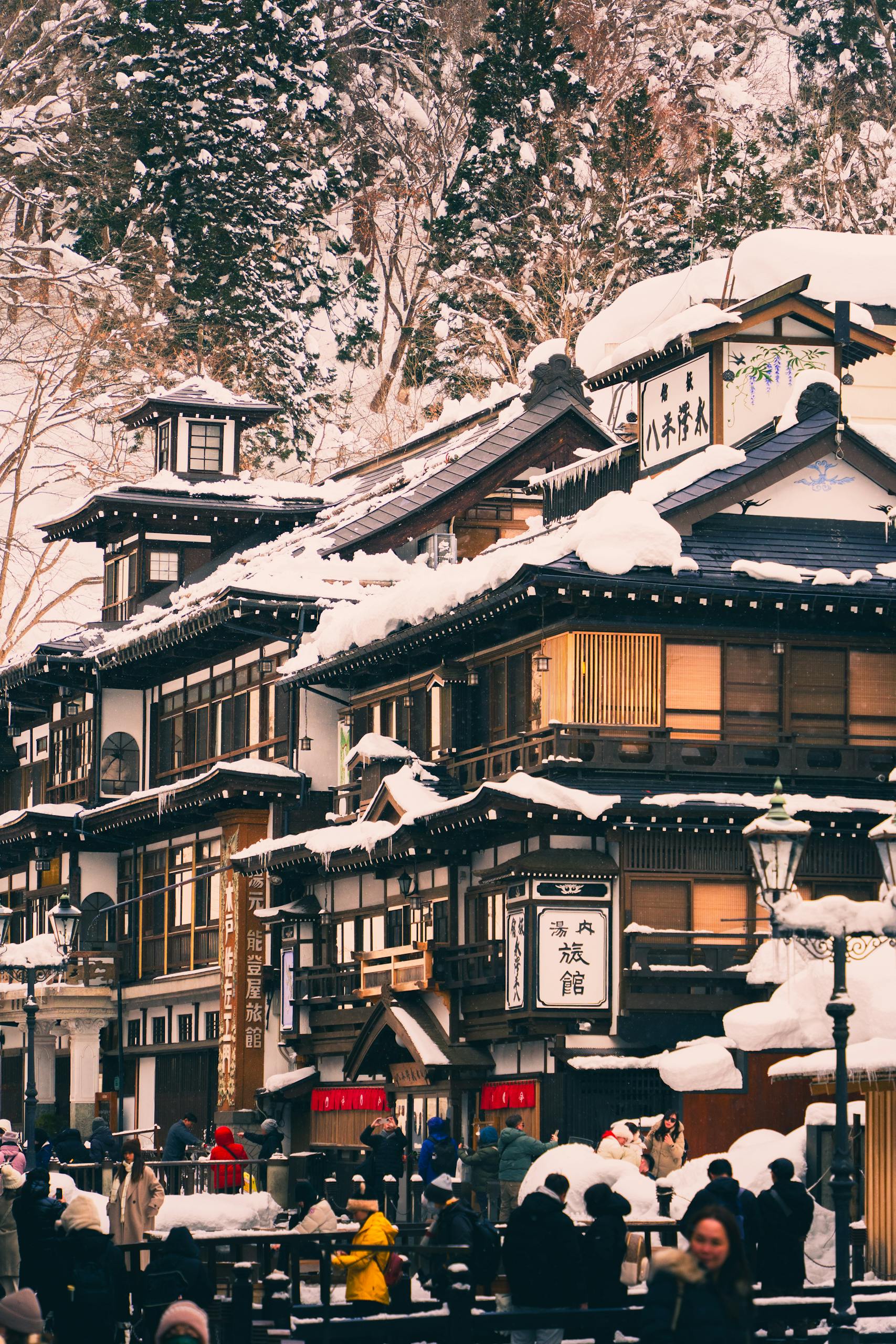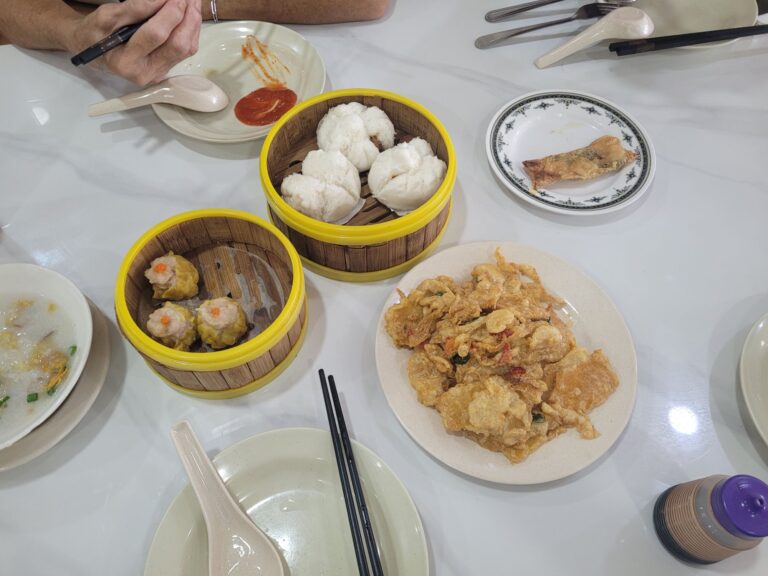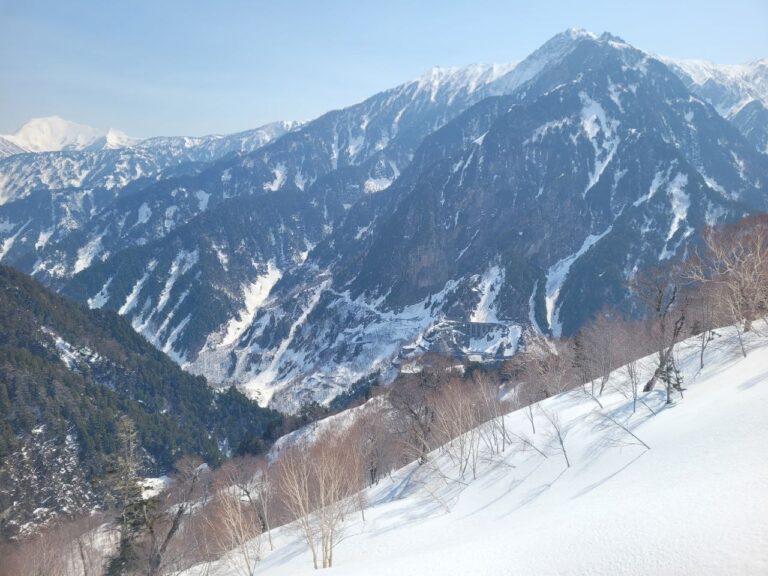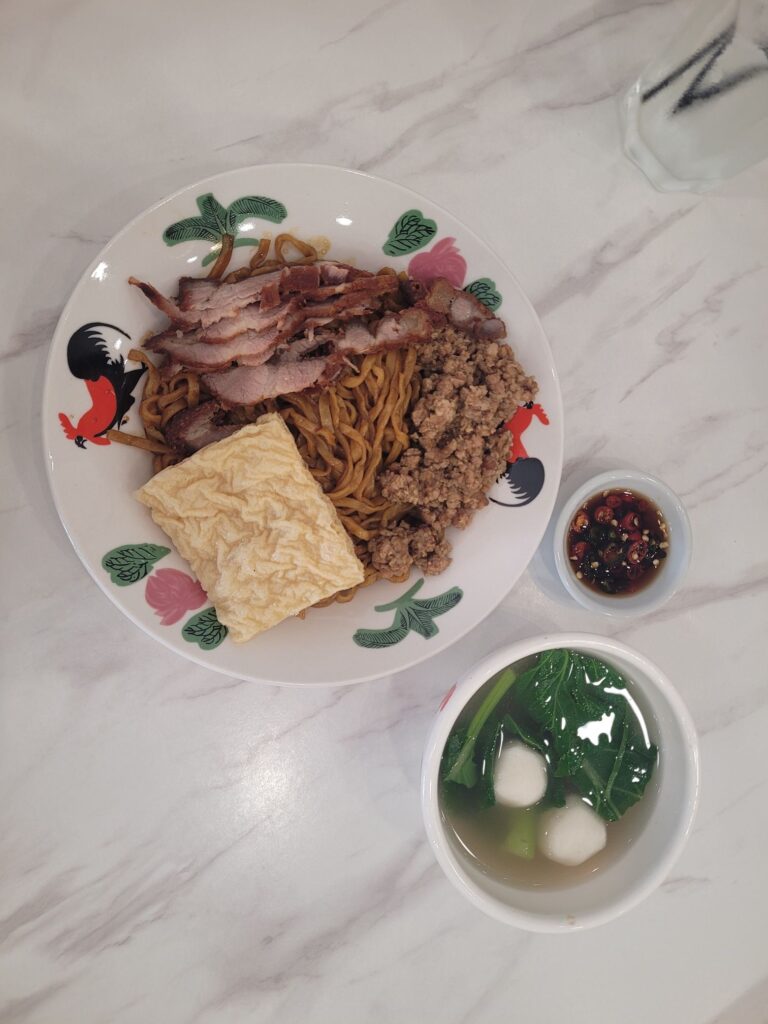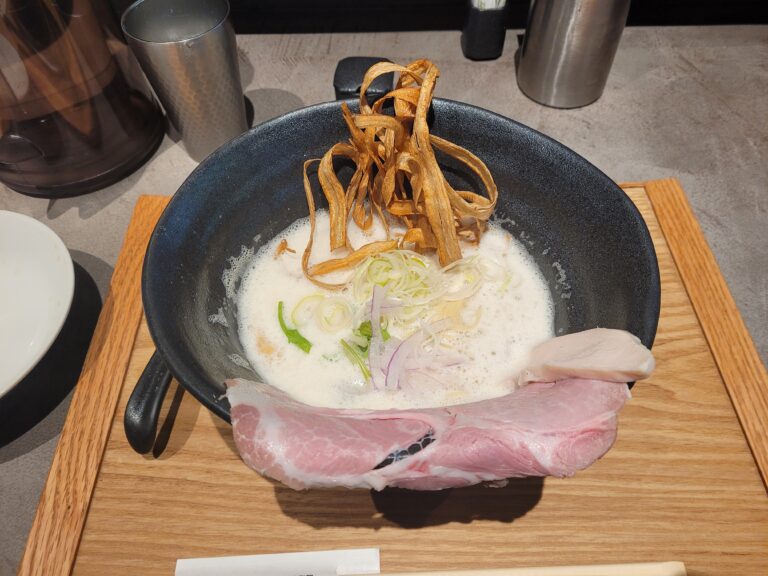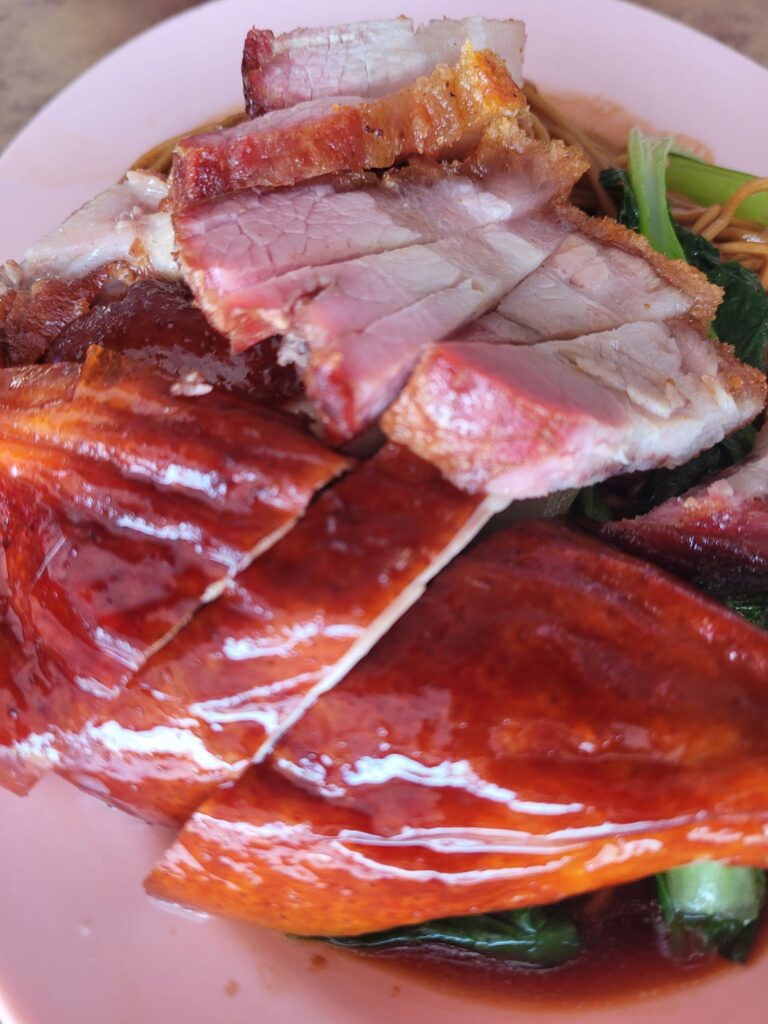Japanese Onsen for Beginners: Stepping into a Japanese onsen as a beginner for the first time is a sensory experience. It’s the humid kiss of steam on your skin, the quiet sound of trickling water, and the profound feeling of leaving the busy world behind. It’s a moment of stillness.
But for many first-time visitors to Japan, the idea of an onsen is a mix of beauty and bewilderment. The thought of navigating unspoken rules, cultural norms, and the simple fact of being naked in front of others can feel intimidating. Am I doing something wrong? What are the rules?
If you’re feeling that slight hesitation, take a breath. This guide is here to be your thoughtful friend, walking you through everything you need to know. It’s here to demystify the process so you can focus not on the rules, but on the incredible cultural and restorative experience that awaits.
An onsen is far more than a hot bath. It’s an invitation to connect with one of Japan’s most cherished traditions. Let’s explore it together.
🌊 What is a Japanese Onsen? The Heart of a Culture
At its core, a true onsen (温泉) is a natural hot spring. To earn the name, it must legally meet the standards of Japan’s Hot Springs Act: the water must be at least 25°C (77°F) at its source and contain a specific concentration of natural minerals.
This tradition is ancient, with descriptions of bathing rituals appearing in Japan’s oldest history books, like the Kojiki (700 AD). For centuries, these mineral-rich waters have been a cornerstone of Japanese life, central to health, community, and purification.
🛁 Onsen vs. Sento: Understanding the Difference
You might also hear the term sento (銭湯) being used **. It’s helpful to know the distinction:
- Onsen: Uses natural, geothermally heated spring water rich in minerals. They are often found in scenic mountain or coastal towns, known as onsen-gai (温泉街).
- Sento: A public bathhouse that uses heated tap water. These are typically found in urban neighborhoods and serve as a community hub for daily bathing.
While both offer a wonderful bathing experience, an onsen connects you directly to the unique geology and nature of Japan. It’s a place for a deeper kind of communion, with the environment, with others, and with yourself. This is the essence of hadaka no tsukiai (裸の付き合い), or “naked communion,” where the absence of clothes strips away social hierarchies, fostering a simple, shared sense of humanity.
📋 Onsen Etiquette: A Step-by-Step Guide for a Seamless First Visit
The etiquette of an onsen might seem complex, but it all comes down to one simple principle: keeping the shared water clean and the atmosphere peaceful. Follow these steps, and you’ll navigate the experience with confidence and grace.
🚶♂️ Step 1: The Changing Room (Datsuijo 脱衣所)
When you enter, you’ll find separate areas for men (男) and women (女). Inside the changing room, or datsuijo, you’ll find baskets or lockers for your clothes and belongings. You will disrobe completely here.
Like most of you, I hesitated going in, I spent time pacing around waiting for everyone to come out. But remember, everyone is in the same boat, and the focus is on personal relaxation, not on others. I took a deep breath and entered and embraced the culture. Most people are not interested in looking at you, while for me, I just avert my eyes away from others.
🧼 Step 2: The Pre-Bath Wash (Kakeyu 掛け湯) – The Golden Rule
This is the most important rule of the onsen. Before you even think about getting into the main bath, you must wash your entire body thoroughly (unless you want to dirty the onsen for everyone else)
- Proceed to the washing area, where you’ll find low stools, faucets, and shower heads.
- Sit on the stool (never stand and splash your neighbors).
- Using the provided soap and shampoo, wash your entire body and rinse off completely.
- If you have long hair, tie it up so it doesn’t touch the water.
💧 Step 3: Entering and Soaking in the Bath
Enter the bathwater slowly and respectfully. No jumping, splashing, or swimming. The onsen is a space for quiet contemplation. Let your body acclimate to the heat (it can be very hot!), find a comfortable spot, and simply soak. You are not allowed to submerge your head in the water.
🧖♀️ Step 4: The Small Towel Mystery, Solved
You’ll be given two towels: a large one for drying (which stays in the changing room) and a small one you can take into the bathing area. This small towel has a few purposes:
- You can use it for a bit of modesty as you walk from the washing area to the bath.
- Once you’re soaking, you can fold it neatly and place it on your head (a classic onsen look!) or set it on a rock beside the bath.
- Crucially, the small towel never goes into the bath water.
🧻 Step 5: Exiting and Drying Off
When you’re ready to leave the bath, don’t head straight for the changing room dripping wet. Before you re-enter the datsuijo, use your small towel to lightly pat your body and wring out excess water. This simple act of courtesy helps keep the changing room floor dry for everyone.
🍵 Step 6: Post-Onsen Relaxation
After drying off completely with your large towel, take a moment to relax. Many onsen have tatami lounges or relaxation areas. Most importantly, be sure to rehydrate with water or tea. Let the warmth and calm of the experience settle in.
✨ The Healing Power of Onsen Water: Beyond Simple Relaxation
The profound sense of well-being you feel after an onsen soak isn’t just in your head. It’s a combination of scientific effects and the serene environment.
- Thermal Effects: The heat of the water improves blood circulation and boosts your metabolism, which can help ease muscle pain and fatigue.
- Buoyancy Effects: The feeling of weightlessness in the water allows your muscles and joints to relax deeply.
- Mineral Effects: Natural minerals are absorbed through your skin. Sulfur can be beneficial for skin conditions, while chloride helps your body retain warmth long after you’ve left the bath. Studies have even linked regular onsen bathing to reduced stress, lower blood pressure, and better sleep.
🗺️ Choosing Your Perfect Experience: Types of Onsen and Baths
Not all onsen are the same. The geology of Japan creates a wonderful variety of water types and bathing experiences.
🧪 A Quick Guide to Onsen Water “Flavors”
- Simple: At least 25°C, but with few minerals. Gentle on the skin with low mineral content. Perfect for first-timers.
- Sulfur: Has a distinct “rotten egg” smell and is known for its benefits for skin and joints.
- Iron: The water is often a reddish-brown color and is excellent for warming the body.
- Bicarbonate: Known for its skin-softening, cosmetic effects.
Pro Tip: Look for facilities that advertise gensen kakenagashi (源泉掛け流し). This means the water flows directly from the source, untreated and un-recycled, the purest onsen experience you can find.
🛁 More Than a Tub: Different Ways to Bathe
- Roten-buro (露天風呂): The classic outdoor bath, often with breathtaking views of mountains, forests, or the sea.
- Ashi-yu (足湯): A casual, public foot bath. You remain fully clothed and simply soak your feet, a perfect way to rest during a day of sightseeing.
- Suna-yu (砂湯): A unique sand bath where you are buried in naturally heated volcanic sand.
- Utase-yu (打たせ湯): A “waterfall bath” where streams of hot water fall onto your back and shoulders, acting as a natural massage.
📍 Where to Go: Finding Your Perfect Onsen Town
Japan has thousands of onsen, but here are a few renowned towns that are great starting points for a first-timer.
- Near Tokyo: Hakone is a classic choice, easily accessible and offering stunning views of Mount Fuji. Kusatsu is another famous option, known for its powerful acidic waters.
- Near Kyoto & Osaka: Kinosaki Onsen is a picturesque, walkable town where visitors stroll between seven public bathhouses in a traditional yukata. It’s also famously tattoo-friendly. Arima Onsen is one of Japan’s oldest resorts, tucked away behind Kobe.
- In Kyushu (The Onsen Island): Beppu is an onsen powerhouse, famous for its sheer volume of water and its “Hells of Beppu” geothermal pits. For a more tranquil, rustic experience, Kurokawa Onsen is a magical village set in a forested valley.
🤔 Your Onsen Questions, Answered Calmly (FAQ)
Here are answers to the most common questions first-time visitors have.
Are tattoos allowed in a Japanese onsen?
This is the most frequent concern for international travelers. Historically, tattoos were associated with the yakuza (Japanese gangs), so many onsen banned them. However, attitudes are changing given the influx of foreigners. Here are your options:
Cover Them: For small tattoos, waterproof skin-tone patches or bandages are a great solution and are accepted at many places.
Go Private: This is the most reliable option. Book a ryokan with a private onsen in your room or reserve a time slot at a private family bath, known as a kashikiri (貸切) or kazokuburo (家族風呂).
Find a Tattoo-Friendly Onsen: More and more onsen are becoming explicitly tattoo-friendly. Towns like Kinosaki Onsen and Beppu are famous for being welcoming to tattooed guests. Always check the onsen’s official website beforehand.
Can couples or families bathe together?
Most public onsen baths are separated by gender. For couples, families, or anyone who prefers privacy, booking a private onsen is the perfect solution. Many ryokans have this as an options available.
Do I need to stay overnight, or can I do a day trip?
Both are possible! Many onsen facilities, including traditional inns (ryokan), offer day-use passes for a small fee. However, an overnight stay in an onsen town allows for a much more immersive experience, often including incredible local meals and the chance to try multiple baths.
What should I bring to a day-use onsen?
If you’re staying at a ryokan, towels and toiletries are almost always provided. For a day visit to a public onsen, it’s wise to bring:
A small entry fee (usually paid at a vending machine or front desk).
Your own small and large towels (or you can often rent them).
A plastic bag for your wet towel.
Change for a locker.
Are There Onsens Outside of Japan?
This is a nuanced question! Strictly speaking, an onsen, by its precise legal and cultural definition, is unique to Japan. For a facility to be officially designated an onsen in Japan, it must meet specific criteria regarding natural water temperature and mineral content, combined with deep cultural roots.
However, natural hot springs exist worldwide, offering therapeutic bathing experiences. You’ll find incredible thermal baths and mineral springs in places like Iceland, New Zealand, Hungary, and Italy – though they go by different names.
You can also find “Japanese-style” or “onsen-inspired” facilities outside of Japan. These aim to replicate the serene atmosphere and bathing etiquette (like washing before soaking) of a Japanese onsen, often using natural spring water from their local environment. So, while you might not find a true onsen outside Japan, you can certainly find wonderful similar experiences inspired by this beautiful tradition.
✨ For Further Exploration (Japanese Onsen for Beginners)
For those who wish to delve deeper into the rich world of Japanese onsen, here are some recommended resources:
- Japan National Tourism Organization (JNTO): Japanese Onsen
- Japan-Guide.com: Onsen (Hot Springs)
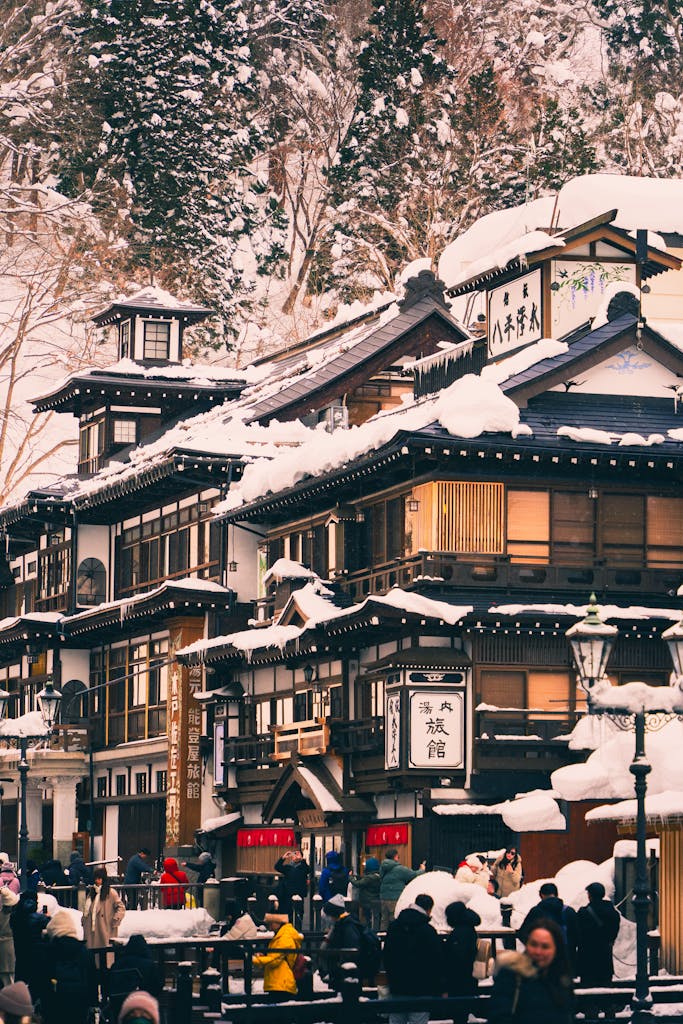
💖 Conclusion: More Than a Bath, It’s a Connection
An onsen isn’t just an activity to check off a list; it’s an invitation to participate in a centuries-old cultural practice of rest, restoration, and respect. It’s a moment to connect, with yourself, with nature, and with the quiet rhythm of Japanese life.
Embrace the vulnerability, follow these simple steps, and you’ll be rewarded with one of the most serene, grounding, and memorable experiences Japan has to offer.
Have you visited a Japanese onsen? What was your first experience like? Share your thoughts or any additional tips in the comments below!
Planning your trip? Explore all our articles on our Japan page.
Find this guide useful? Pin it to your Pinterest board to save for your Japan trip!

